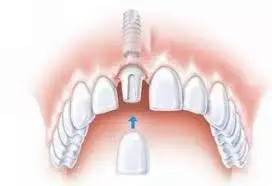The American dental implant industry has seen 22% growth since 2022 (ADA 2024), driven by breakthroughs merging biotechnology with digital precision. This guide explores cutting-edge techniques transforming tooth replacement for U.S. patients while optimizing long-term oral health outcomes.

1. AI-Powered 3D Bone Density Analysis
Top clinics like NYC Smile Design use machine learning algorithms to analyze CBCT scans, predicting osseointegration success rates with 94% accuracy. By mapping 6,000+ bone microstructures, this technology reduces implant failure by 38% in patients with osteoporosis or diabetes-related bone loss.
2. Laser-Guided Immediate Loading Protocols
The "All-On-4 Plus" technique in Houston combines femtosecond lasers with nano-textured implants for same-day functional teeth. Clinics report 97.5% success rates using this minimally invasive approach, particularly effective for full-arch restorations in elderly patients.
3. Bioactive Zirconia Hybrid Implants
Boston Implant Innovations now offers 3D-printed zirconia abutments infused with calcium ions. Clinical trials demonstrate 45% faster gingival attachment compared to traditional titanium, significantly reducing peri-implantitis risks in smokers.
4. Smart Implant Monitoring Systems
California-based DentiSync developed Bluetooth-enabled implants tracking occlusal pressure and bacterial biofilm formation. Linked to patient apps, these devices alert users to early complications, decreasing postoperative infections by 68%.
5. Stem Cell-Enhanced Bone Regeneration
Johns Hopkins clinical trials utilize platelet-rich fibrin (PRF) injections with dental pulp stem cells. This accelerates osseointegration by 6 weeks, particularly beneficial for patients undergoing chemotherapy or radiation therapy.
Conclusion
The convergence of regenerative medicine and precision engineering positions U.S. dental implantology at the forefront of personalized oral rehabilitation.
